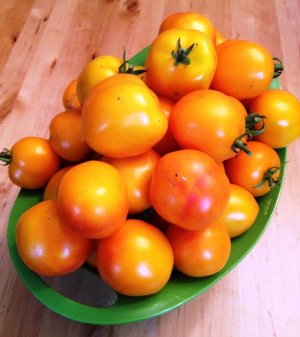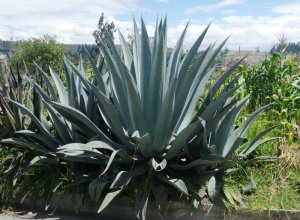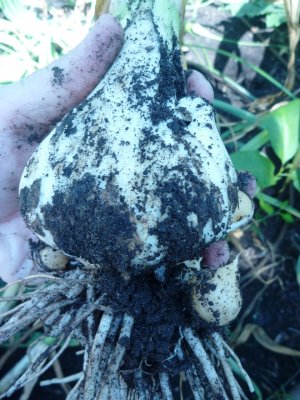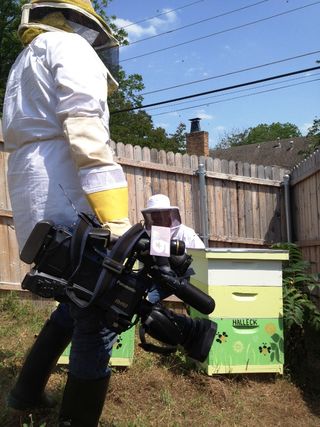Tomatoes not setting fruit, or ripening?
June 21, 2012
 It's about that time of year when I start getting asked a lot of questions about why your tomato plants either haven't set fruit, or are not ripening on the vine. The first question I'll always ask is "When did you plant them?"...if you're here in Texas, or similar Southern climates, and you tell me you planted on April 15th, then I'll yet again wag my finger at you and tell you "that's too late!' There is an optimal temperature range for both fruit set and ripening in tomatoes. If the average day/night temperature is hotter or colder than that optimal range, you'll have poor or no fruit set or ripening. That's why it's important to get tomato transplants in the ground as early as you can push it. Here in Texas, depending on the weather, you can plant as early as late February. Ideally, you'll get them in the ground mid-March. April 1st is my absolute cutoff for planting; so plants have time to mature, produce flowers and set fruit before temperatures get too hot. Now, I know some of you will say something like "well I have cherry tomatoes and they are still fruiting..." Yes, that's often the case with smaller-fruited varieties. They are generally more heat tolerant.
It's about that time of year when I start getting asked a lot of questions about why your tomato plants either haven't set fruit, or are not ripening on the vine. The first question I'll always ask is "When did you plant them?"...if you're here in Texas, or similar Southern climates, and you tell me you planted on April 15th, then I'll yet again wag my finger at you and tell you "that's too late!' There is an optimal temperature range for both fruit set and ripening in tomatoes. If the average day/night temperature is hotter or colder than that optimal range, you'll have poor or no fruit set or ripening. That's why it's important to get tomato transplants in the ground as early as you can push it. Here in Texas, depending on the weather, you can plant as early as late February. Ideally, you'll get them in the ground mid-March. April 1st is my absolute cutoff for planting; so plants have time to mature, produce flowers and set fruit before temperatures get too hot. Now, I know some of you will say something like "well I have cherry tomatoes and they are still fruiting..." Yes, that's often the case with smaller-fruited varieties. They are generally more heat tolerant.
Starting this weekend, you can plant your second crop of fall tomato transplants. Get them in the ground by mid-July. The 4th of July is always a good target date.
If you want to read more specifics about fruit set, ripening an the effects of temperature on tomatoes, you can read THIS POST.

 Ok...we've gotten off easy the last couple of months with all the mild temps and rainfall...but SUMMER IS COMING... so it's time to mulch folks. That's what I'll be doing this weekend. Mulching all the new and old beds. On yard of mulch down...only 7 more to go. I think I'd better go ahead and take the ibuprofen now! yeeesh.
Ok...we've gotten off easy the last couple of months with all the mild temps and rainfall...but SUMMER IS COMING... so it's time to mulch folks. That's what I'll be doing this weekend. Mulching all the new and old beds. On yard of mulch down...only 7 more to go. I think I'd better go ahead and take the ibuprofen now! yeeesh.


 Texans..it's about that time to harvest your garlic, if you haven't done so already. Click
Texans..it's about that time to harvest your garlic, if you haven't done so already. Click 
 Looking for a super hardy drought tolerant Texas native that is also beautiful and blooms FOREVER?? Ok, maybe not forever, but let's say April through fall. That's a pretty long time. Plus, it attracts butterflies. If that sounds up your alley, then Gaura lindheimeri needs to be on your garden shopping list. 'Whirling Butterflies' is a favorite white-flowered varieties, but it also comes in pink...'Ballerina Rose'...lovely
Looking for a super hardy drought tolerant Texas native that is also beautiful and blooms FOREVER?? Ok, maybe not forever, but let's say April through fall. That's a pretty long time. Plus, it attracts butterflies. If that sounds up your alley, then Gaura lindheimeri needs to be on your garden shopping list. 'Whirling Butterflies' is a favorite white-flowered varieties, but it also comes in pink...'Ballerina Rose'...lovely